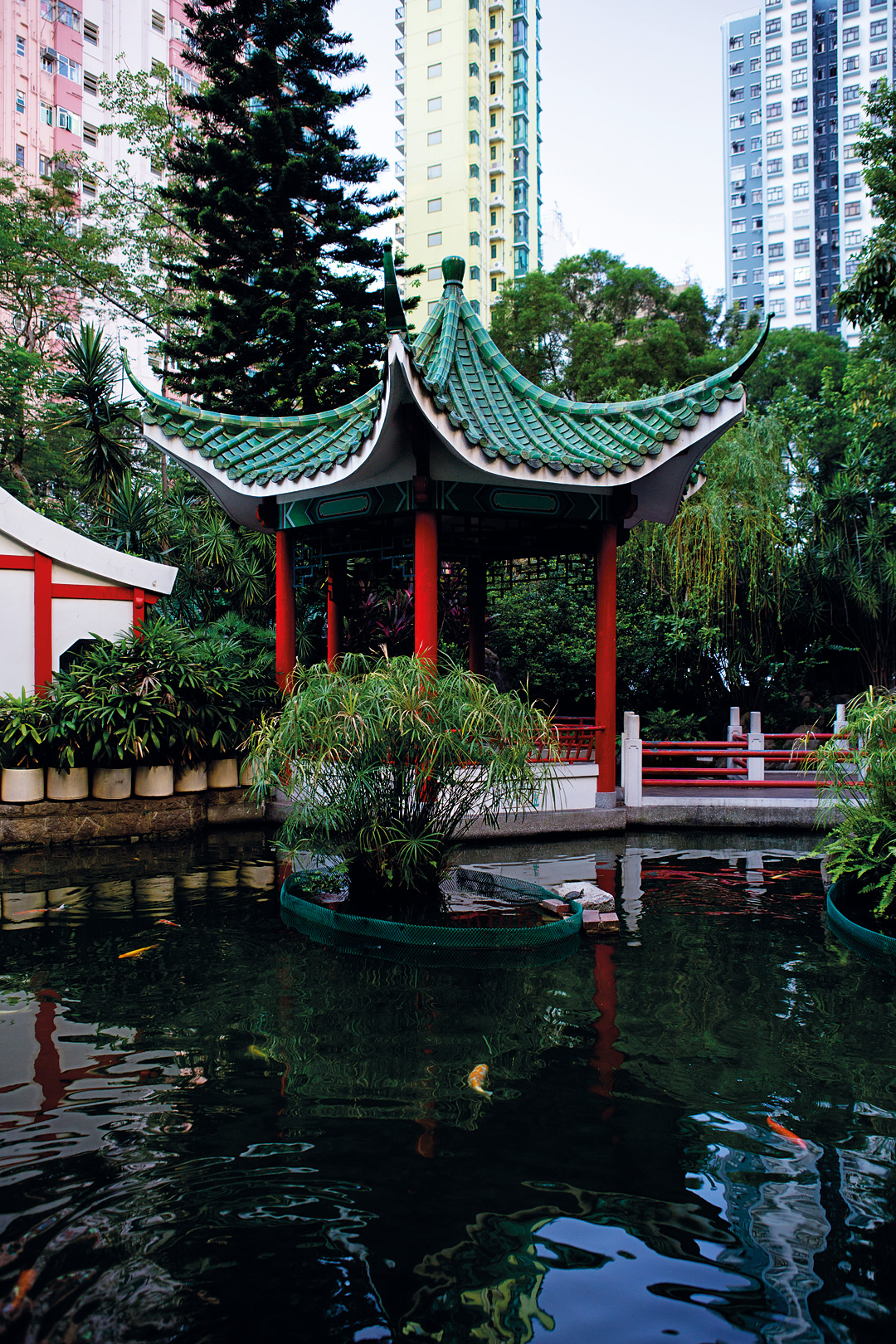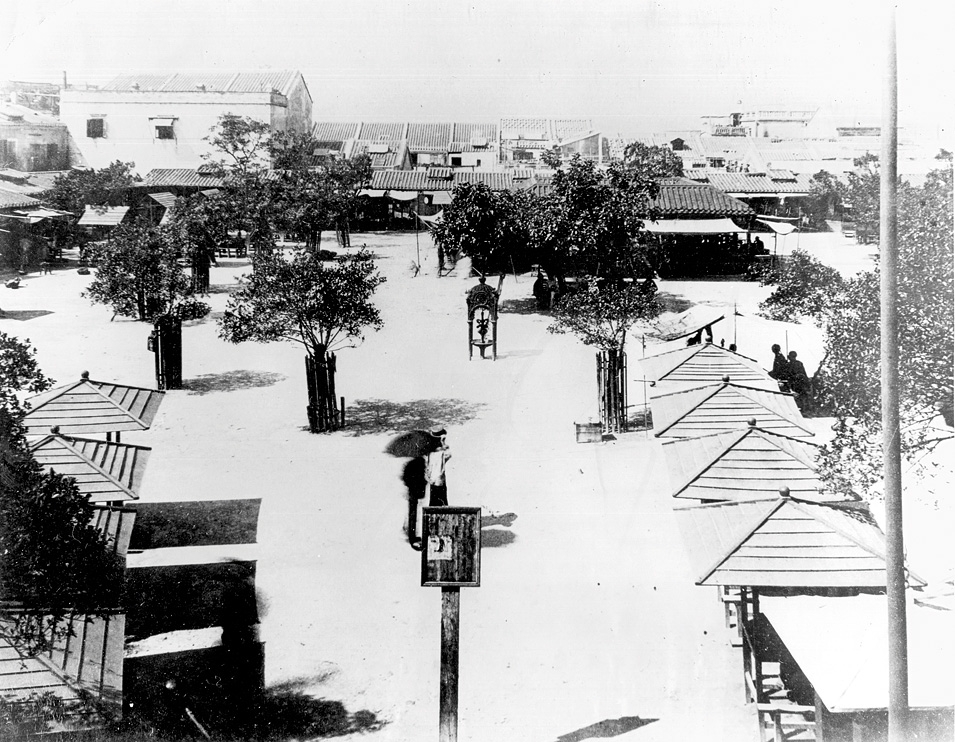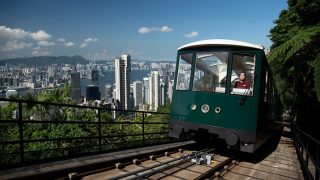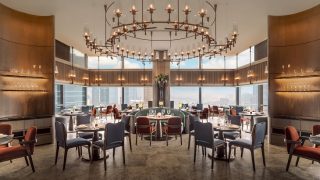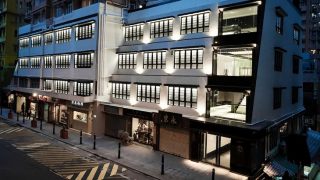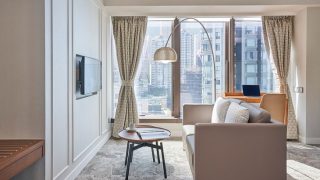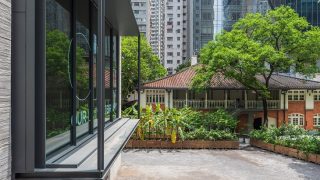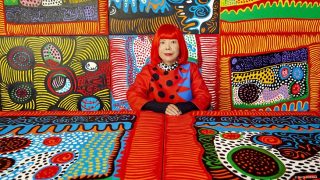A Park at the Heart of History
A leafy enclave of carp ponds and pavilions, Hollywood Road Park occupies a storied patch of Hong Kong Island—the very spot, in fact, where the British first raised their flag
By Olivia Rosenman
On Hollywood Road, 20 strides up from Queens Road West in Sheung Wan, a Chinese garden is enclosed behind a white wall topped with glazed green tiles. Drab, gray apartment buildings surround the garden on all sides. Tall and thin, they protrude like dominos in the typical Hong Kong style. Faded T-shirts and underpants dangle on coat hangers hooked to improvised washing lines—lengths of bamboo balanced between dripping air conditioners.
Four thick, red columns are the legs of the garden’s entrance gate. Just below the roof, HELIHUO DAO GONGYUAN is inscribed in stylized characters. To the left, a plaque on the wall translates the name in English: HOLLY-WOOD ROAD PARK. Inside the walls, curved paths wind around pavilions and a lotus pond, where fat carp loiter near the surface, waiting for a feed. They never wait long. Overhead, crested mynas, great tits, and tiny sparrows join forces to compete with the din of traffic. Mostly, they hold their own. Then an ambulance screams past, heading west to Queen Mary Hospital.
In a small pavilion by the pond, at four in the afternoon, a caucus of silver-haired gentlemen with corn-yellow teeth holds session. This is the hehua ting—the lotus pavilion, traditionally designed for people to sit and enjoy the flowers’ aroma. On its bench the oldsters have placed neat squares of newspaper, each folded carefully to bottom-size. One man gazes off to the north, unperturbed by buildings blocking what would once have been a harbor view; now and again, he drops handfuls of stale bread to the ravenous fish. Another paces from one side of the pavilion to the other and back again, gesticulating as he goes. At five o’clock, a helper shuffles up in plastic slippers to collect a man parked in his wheelchair. She executes a tight three-point turn and rolls him down the pavilion’s zigzag path, past the playground and toward the exit. Dinnertime.
My daily routine takes me down Hollywood Road, past this park. Rarely do I stop. A regular cast of locals visit daily too. But do any of us pause to consider that today’s Hong Kong started here? From the fallout of the Opium War, through a plague and as a civic center, this piece of land—just half the size of an athletics track—has seen events that helped shape both Hong Kong’s British and Chinese communities.
**
January 26, 1841: British ships blazed down the Pearl River, brandishing a freshly inked agreement negotiated after China’s defeat in the battle of Chuanbi. It was the beginning of Britain’s victory in the First Opium War, and the blueprint for the Hong Kong we now know. The victors strode ashore right where Hollywood Road Park now sits.
Britain and China had been fighting for almost two years. A lot was riding on this war, for both sides. The British were determined to end the Canton System, a restrictive set of rules that forced all foreign trade through the port of Guangzhou. The Qing emperor’s tight control on trade infuriated the British, and limited their profits. The Chinese, for their part, were desperate put a stop to British opium imports—and the ruinous addictions that attended them—once and for all.
In June 1839, the imperial commissioner Lin Zexu seized and destroyed thousands of kilos of the drug. In the most scathing letter ever addressed to a British monarch, he told Queen Victoria that her merchant subjects were callous, profit-seeking barbarians: “Let us ask, where is your conscience? I have heard that the smoking of opium is very strictly forbidden by your country; that is because the harm caused by opium is clearly understood. Since it is not permitted to do harm to your own country, then even less should you let it be passed on to the harm of other countries —how much less to China!” The letter was ignored and in November 1839 the First Opium War began.
In the first week of January 1841, Commo-dore James Bremer led British forces to victory in a battle around the islands of Chuanbi, in the Pearl River Delta, south of Guangzhou. The ceasefire agreement provided for the cession of Hong Kong Island to the British government, as well as a hefty 1.4-million- pound payment for the opium Lin Zexu had destroyed. Bremer and his squadron then sailed into Hong Kong’s harbor and pitched the Union Jack in what is now Hollywood Road Park. “Under a feu de joie from the marines, and a royal salute from the ships of war,” Hong Kong was formally in Britain’s possession.
Today, the only remaining evidence of this fanfare is Possession Street. Short and steep, it runs along the east side of the park from Queens Road, which skirted the waterfront before a 1859 land reclamation project pushed the shore back by half a kilometer. At dusk, tired office workers trudge up it, heading toward trendy apartments on Hollywood Road. Some escape the havoc of the streets by detouring through a tiny alley that leads to the park’s back entrance. Inside, it is cooler, calmer. There is space. But, like me, they do not slow down. This is their daily routine and they’ve got somewhere to be.

